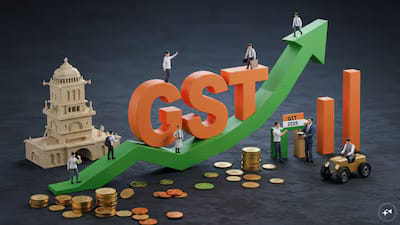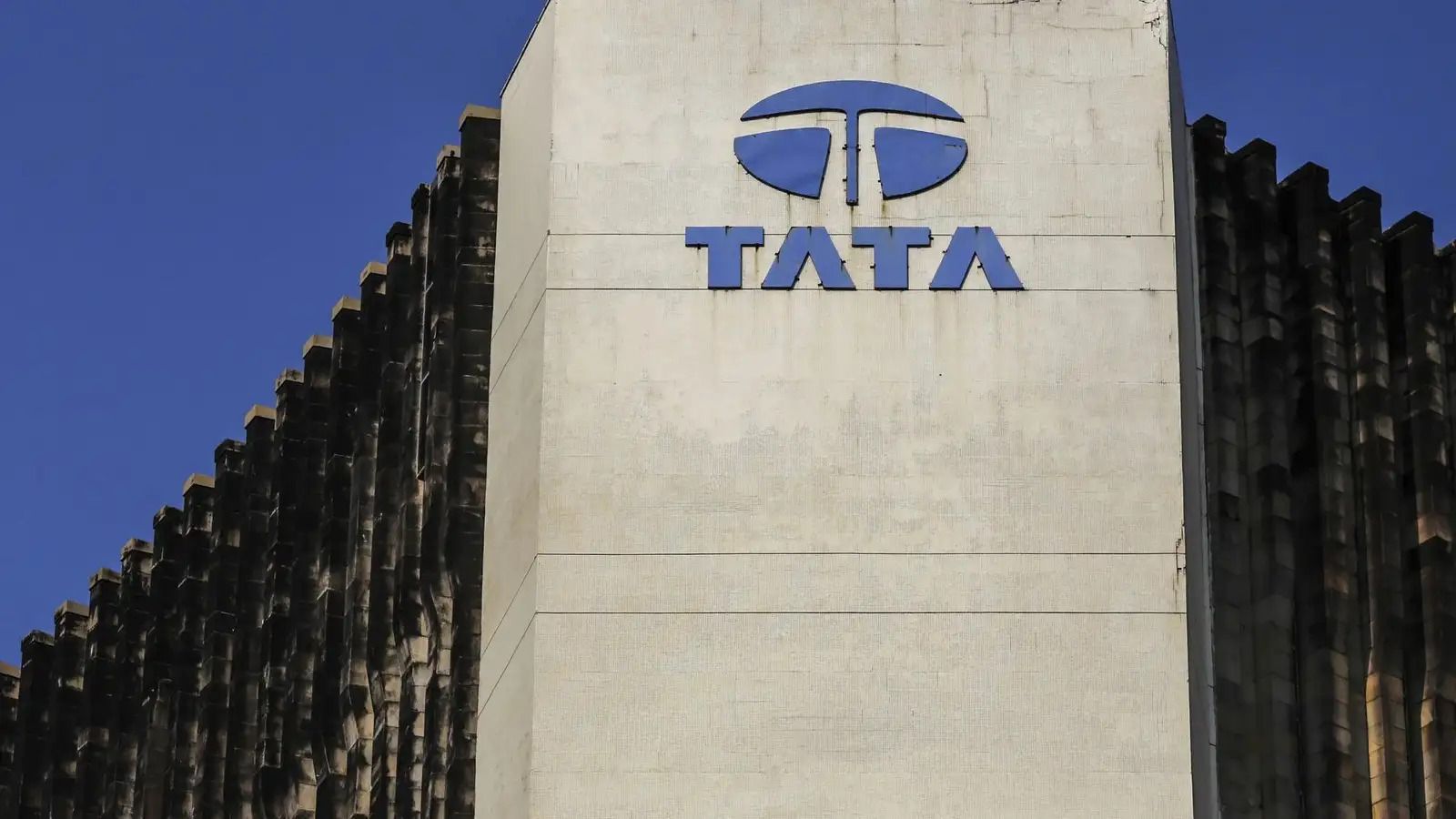- Hanoomaan India Business
- Posts
- GST Council 2025: Next-Gen Tax Reforms Explained
GST Council 2025: Next-Gen Tax Reforms Explained
Also, learn why building Wealth gets easier after $100K.

Read time: Under 4 minutes
Welcome Back Investor!
India’s auto stocks just hit an 11-month high - thanks to a sweeping GST cut that slashed taxes on small cars, motorcycles, buses, and trucks from 28% to 18%. Suddenly, driving is more affordable and investor spirits are soaring. Mahindra & Mahindra jumped around 6%, while Eicher Motors, boosted by its tractor-heavy lineup, also gained strong traction.
Let’s dive in!
But before we start!
If you find the contents of this email useful, subscribe now & share with your friends.

Today’s Market Menu
▪️ Impact News
▪️ Markets
▪️ Everything else you need to know today
▪️ Special
▪️ Mindset
▪️ Stock Screener to up your game
IMPACT NEWS
India’s GST Reset: What It Means for You and the Economy

The GST Council has just announced one of the most significant overhauls since the tax’s inception - a simplified two-slab structure of 5% and 18%, effective September 22. The move is being called a “next-gen reform,” designed to cut complexity, boost compliance, and spark consumption at just the right time: ahead of the festive season.
So, what changes on the ground? For starters, daily essentials like toothpaste, soaps, and food staples will now carry lower rates, putting a little extra cash back in consumers’ pockets. The auto sector - often seen as a bellwether of economic health - also benefits, with small cars and two-wheelers facing reduced GST. This could unlock demand among middle-class buyers. Similarly, appliances and durables such as refrigerators and washing machines get cheaper, giving a welcome push to FMCG and consumer spending.
Not everything is lighter, though. Luxury products, tobacco, and alcohol remain heavily taxed, showing the government’s intent to protect revenue and discourage high social-cost consumption. Meanwhile, rationalized rates on cement and insurance premiums could help infrastructure growth and financial inclusion.
MARKETS
The Sensex ended at 80,718 (+150 pts, +0.19%) and Nifty 50 at 24,734 (+19 pts, +0.08%), supported by strong gains in auto and FMCG stocks after GST rate cuts on cars and consumer essentials. Heavyweights like Mahindra & Mahindra and Eicher Motors led the rally, while consumer names added momentum on hopes of a festive demand boost. However, the Nifty Midcap 100 slipped 0.67%, dragged down by Max Financial Services, which dropped nearly 3% on heavy volumes, reflecting profit booking and selective selling in broader markets.
Closing figures as on 04.09.25 (3.30pm IST)
✅ SENSEX | 80,718.01 | +0.19% |
✅ NIFTY 50 | 24,734.30 | +0.08% |
✅ NIFTY BANK | 54,075.45 | +0.01% |
🔻 NIFTY Midcap 100 | 56,959.15 | -0.67% |
🔻 NIFTY Smallcap 100 | 17,748.45 | -0.71% |

🔎 In Focus
Stock Performance:
Top Gainers
✅ Mahindra & Mahindra (+5.95%): Auto stocks rallied after the GST cut on cars and two-wheelers from 28% to 18%. M&M, with its strong SUV lineup, emerged as a key beneficiary, attracting heavy buying.
✅ Bajaj Finance (+4.29%): Finance stocks gained on expectations of higher consumer spending and EMI demand post-GST cuts on appliances and autos. Bajaj Finance rode the festive demand sentiment wave.
✅ Colgate (+3.47%): FMCG stocks surged after GST was reduced on essentials like soaps, shampoos, and oral care. Colgate saw strong buying interest on hopes of improved volumes.
✅ Jubilant Food (+3.05%): QSR companies benefited from lower GST on food items and expectations of higher discretionary spending. Jubilant Food rallied on festive-season demand optimism.
Top Losers
🔻 Paytm (−3.66%): Paytm slipped due to profit-taking after strong year-to-date gains. Investors rotated into GST beneficiaries like autos and FMCG, leading to weakness in fintech stocks.
🔻 Exide Industries (−3.21%): Despite the auto sector rally, Exide saw selling pressure and profit-booking after recent gains. Traders booked profits amid volatility in midcap stocks.
🔻 Max Financial (−3.18%): Insurance companies cheered GST exemptions, but Max Financial dropped on heavy volumes. Concerns around reversal of accumulated input tax credit (ITC) hit sentiment.
🔻 Varun Beverages (−3.12%): The stock fell as carbonated drinks were brought under the new 40% GST slab, raising concerns over margins and demand for soda/beverage players.
INDIA FRONTIER
Everything else you need to know today

🌱 Thrive: Tata Sons may sidestep its IPO deadline as the RBI appears likely to allow it to stay private - thanks to cleared debt and a surrendered NBFC license. But all eyes are on whether Tata Trusts and the SP Group can reach consensus before regulators call the final verdict.
🧬 Innovate: Karnataka is seeding a new bioinnovation centre in Ballari - its second state-backed hub after Bengaluru. The 50,000 sq ft facility will nurture startups focused on regenerative farming, healthcare, and climate resilience, especially in mining-impacted regions.
☀️ Pivot: India is slashing taxes on renewables to counter U.S. tariffs - and drive green momentum on home turf. By lowering duties on solar and wind gear, the government aims to lighten the export blow and shield renewable growth from geopolitical backlash.
🍵 Unpack: A deep dive into India's tea supply chain reveals how global pressures and climate shifts are reshaping an age-old brew - from shrinking yields to rising costs and evolving trade dynamics.
SPECIAL
Why a 40% GST on Luxury Cars Could Actually Make Them Cheaper

When you hear “40% GST on luxury cars,” your first thought might be: prices are about to skyrocket. But India’s latest GST reform is flipping that assumption on its head. In reality, luxury cars could actually become cheaper under the new regime.
Why: until now, luxury vehicles like SUVs, MUVs, and premium sedans were taxed at 28% GST plus a hefty compensation cess of 17 - 22%. That pushed the effective tax rate to 45–50%, making high-end cars even more expensive once on-road costs were factored in.
The overhaul scraps that cess and replaces it with a flat 40% GST slab for luxury and “sin” goods. While the number sounds high, it’s actually lower than the previous combined rates - and that means savings for buyers.
Take this example: a ₹40 lakh luxury car previously carried an on-road price of about ₹59.2 lakh. Under the new 40% slab, the price could drop to around ₹56 lakh. That’s a difference of more than ₹3 lakh, enough to change the buying sentiment in a market where psychology matters as much as affordability.
THE HANOOMAAN INSTITUTE
Why Your Financial Momentum Truly Comes Alive After $100K

Building wealth often feels slow and frustrating - until you cross that first $100,000 milestone. That’s when things start to change.
Bigger Returns, Same Effort: At a 7% return, $10K only earns $700. But with $100K, the same return generates $7,000 - often more than many people save in a year.
The Snowball Effect: Once your investments reach six figures, compounding really kicks in. Every dollar you earn and reinvest makes the base grow faster, and your money starts working harder than you do.
From Surviving to Thriving: Hitting $100K often means you also have an emergency fund. That financial cushion shifts your mindset from survival mode to growth mode. You can take smarter risks and worry less about setbacks.
Access to Better Opportunities: With more capital, doors open: lower investment fees, better banking terms, and even access to exclusive funds or IPOs that weren’t available at smaller amounts.
Stronger Financial Stability: A $5,000 expense is half your wealth if you only have $10K, but just 5% if you have $100K. The more you build, the less life’s surprises knock you off course.
👉 The first $100K is the hardest - but once you get there, the momentum of compounding, confidence, and opportunity makes wealth-building much easier.
SUPERCHARGE YOUR INVESTING SKILLS
STOCK SCREENER TO UP YOUR GAME
Growth without dilution
by - Pratyush
Number of equity shares <= Number of equity shares 10years back * 1.1 AND
Sales growth 10Years > 10% AND
Average return on capital employed 10Years > 10% AND
Market Capitalization > 100
Thanks for reading.
Until tomorrow!
Hanoomaan India Business team
Content, news, research, tools, and securities symbols are for educational and illustrative purposes only and do not imply a recommendation or solicitation to buy or sell a particular security or to engage in any particular investment strategy. More details click here